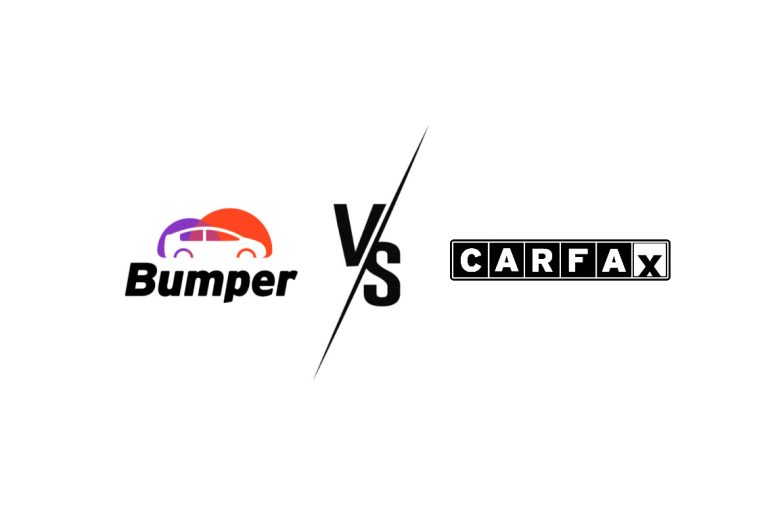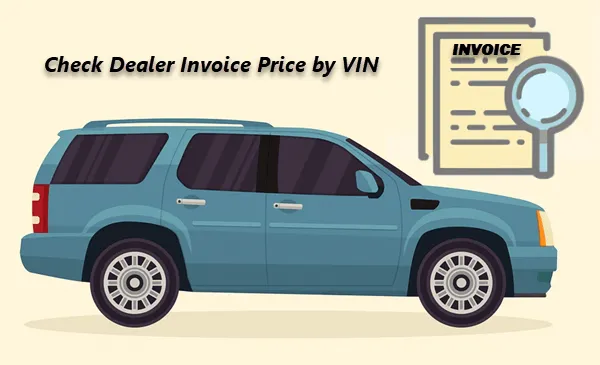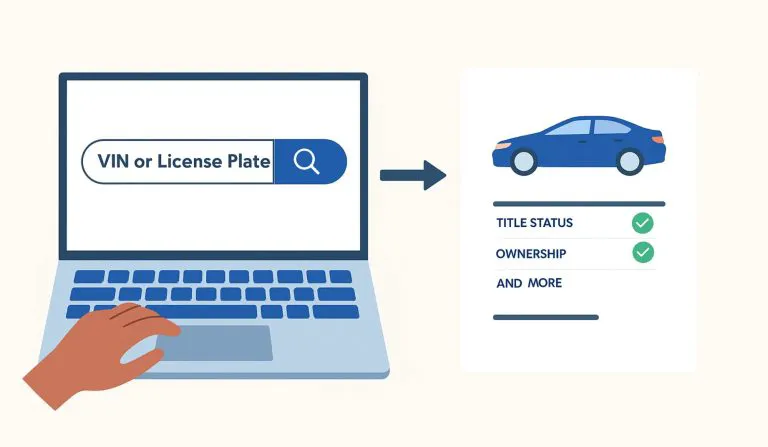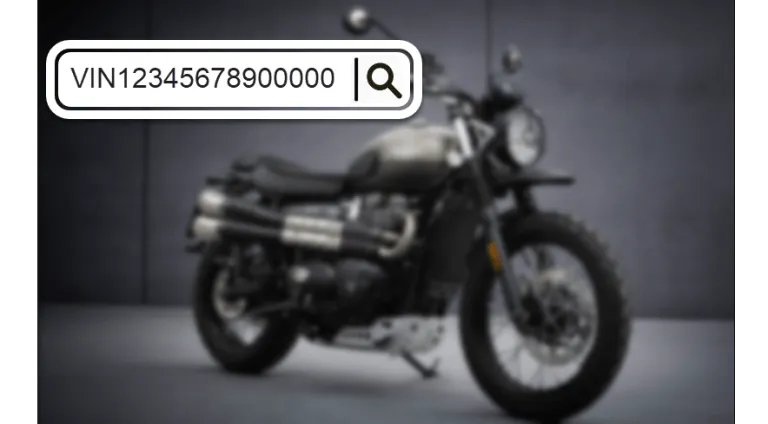How to Find the Tire Size by VIN
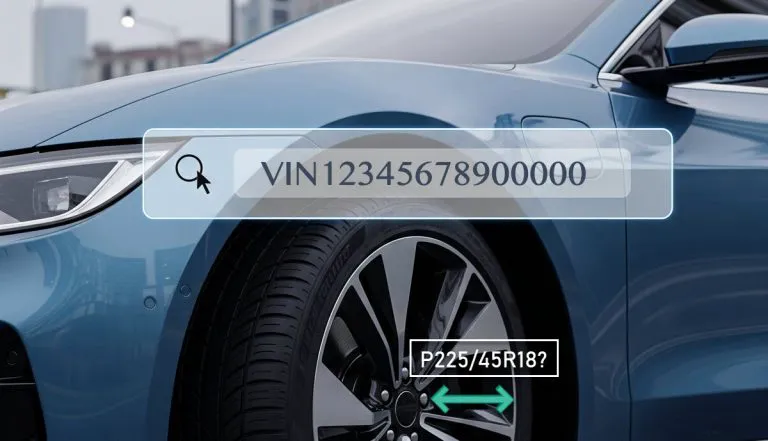
Having the correct tire size is crucial for your vehicle’s safety and performance. The wrong size can hurt your fuel efficiency, cause handling problems, and even lead to premature wear and tear. While the tire size is usually on the tire’s sidewall, it can get worn away. Or, if you bought a used car, you might not be sure if the current tires are the right ones.
That’s where your Vehicle Identification Number (VIN) comes in. In this post, we’ll show you how to use the VIN to find the factory-recommended tire size for your car.
But first…
To make things quick and easy, have your vehicle’s VIN handy before you start. If you’re not sure where to find it, our guide can show you exactly where to look. It also helps to know your car’s year, make, and model, which you can double-check with this tool.
Quick Guide
1. Try a VIN decoder
A VIN decoder is an online tool that translates your car’s VIN into a detailed report. This report can reveal everything available from the engine type and transmission to the factory specs – including the original tire size your car was built with.
While many decoders are available, not all are created equal, especially when it comes to finding original equipment details. We tested several popular options and found that some are much more reliable than others for pinpointing factory tire information.
Bumper
Our top recommendation is Bumper. It’s excellent for finding factory specs because it pulls data from a huge network of sources{{https://www.supereasy.com/vehicle/where-do-vin-lookup-services-get-their-data/}}, including automakers, state DMVs, and insurance providers. And this also increases your chances of finding the right information, even for older or less common vehicles.
Tire size & specs
Bumper is very effective at uncovering original factory specifications, which is where you’ll find the correct tire size.
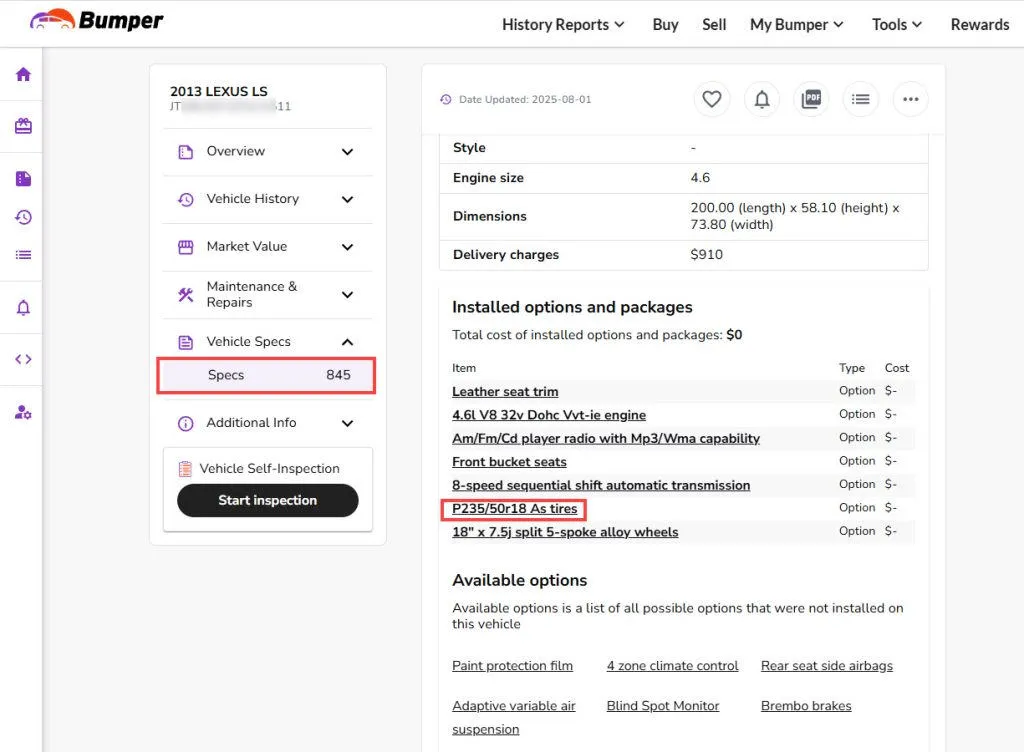
The report may also list other key details like drive type (AWD/FWD), engine, and transmission, which can be important when buying new tires.
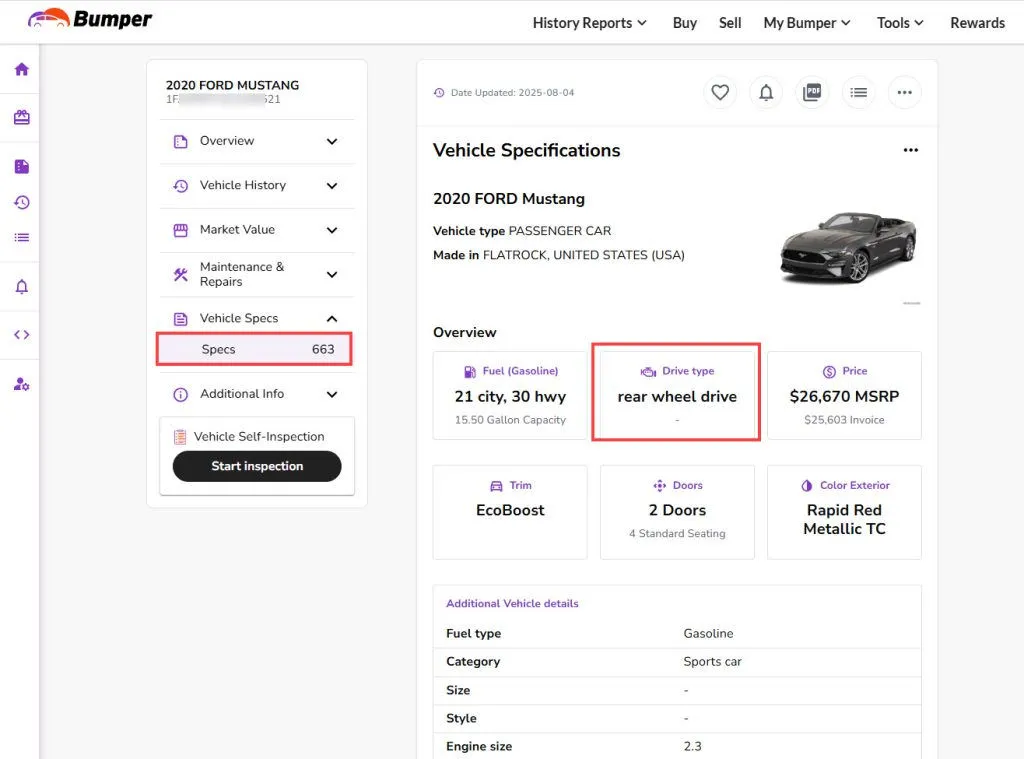
Beyond tire size: Detailed vehicle history
A Bumper report can give you more than just specs. You’ll also get a detailed vehicle history, which may include reported accidents{{Bumper reports are based on data available and may not include historical accident records in all states.}}, possible salvage or flood titles, and sales records, when available. It’s a thorough picture of your car’s past, which is especially useful if you’re planning to sell it.
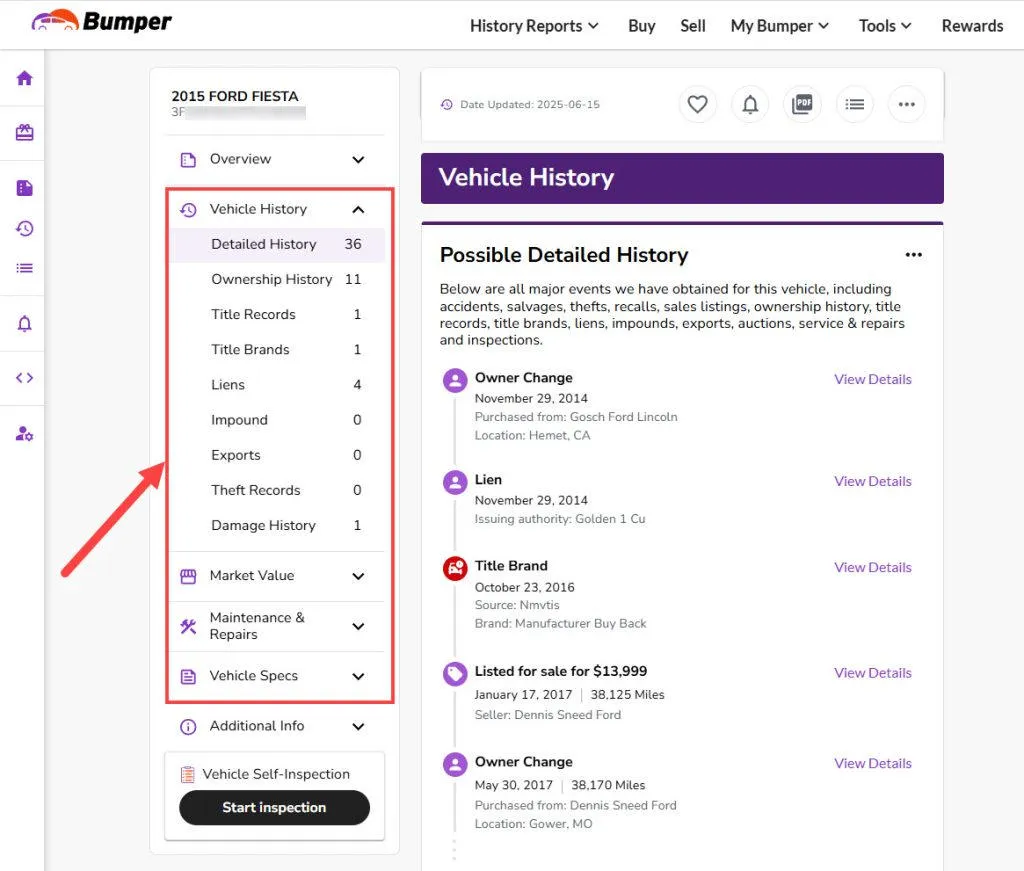
Pricing
Bumper operates on a subscription model. For $27.99 per month, you can run up to 50 vehicle reports. This makes it a cost-effective choice if you’re comparing multiple cars or want to keep an eye on a vehicle over time, especially since some services charge more than that for a single report.
Decode This
If you’re looking for a free option, Decode This is a good place to start. It’s a straightforward VIN decoder that can quickly pull up basic vehicle information, which may include the factory tire size.
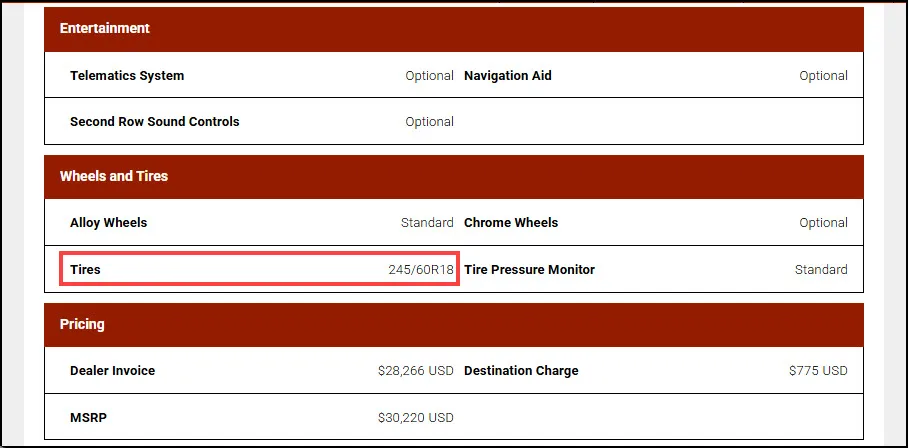
Community-supported decoder
Another source to check for tire sizes by VIN is the car owner forum of your car make. . They’re community-supported and can pull up basic specs, sometimes including the basic tire specs.
For example, the Nissan Forum has a decoder (that works for other makes too) which might list the tire size under Tech Specs.
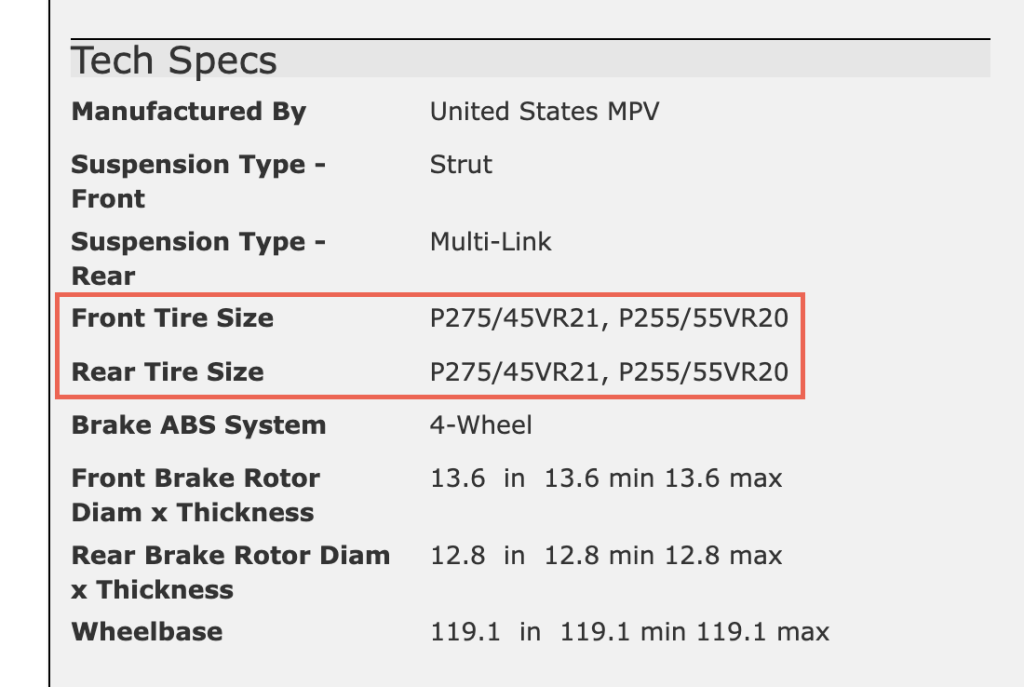
The main trade-off is that the data source of these free tools is more limited than a paid service like Bumper, so it might not have data for older or less common cars. Still, since it costs nothing to use, it’s definitely worth a shot first.
2. Refer to the manufacturer’s specs
Another way to find the tire size by VIN is going straight to the source: your car’s manufacturer. Many automakers have official websites where you can look up the original factory specifications for your vehicle. While some sites are easier to use than others, this is often a reliable way to find the correct tire information for free.
A good starting point is to search online for something like “[car brand] specs by VIN”. Then, look for a link that leads to the official brand website. To show you how it works, let’s walk through an example using a 2015 Toyota Avalon.
- Search Google for “Toyota specs by VIN” and click on the link that takes you to the official Toyota website{{Official pages are usually on the very top of your search engine results page. Also, they will have a regular URL like toyota.com or ford.com, and you’ll find the copyright notice on the end of the page.}}.
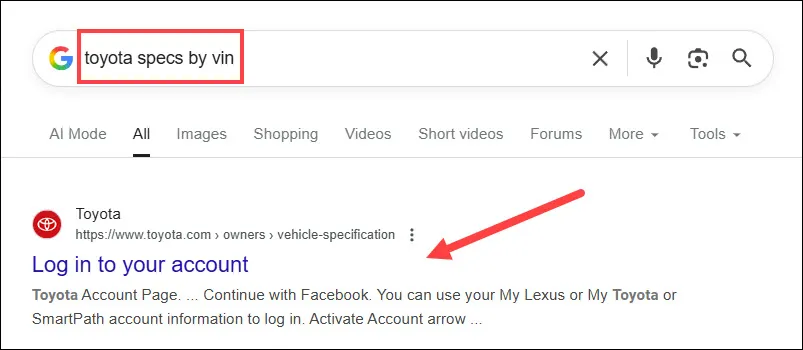
- Once there, you’ll probably need to either log in to an existing account or create a new one, which is common for accessing specific vehicle data{{Not all manufacturers require a login. Some brands allow you to access vehicle specifications without creating an account.}}.
- After signing in, just enter your VIN when prompted.
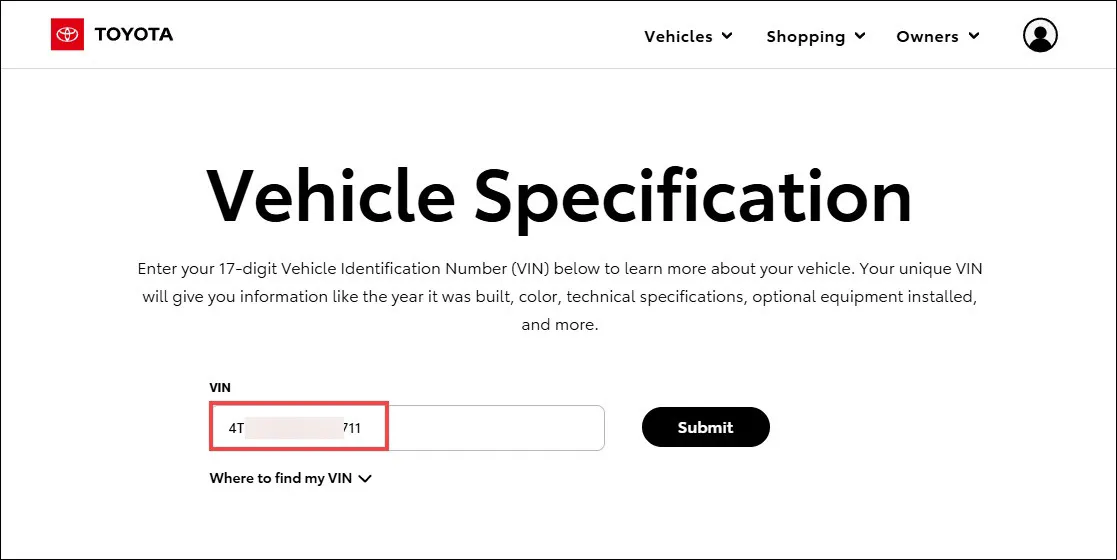
- The site should then pull up a page with all the details for your specific Avalon, including its original factory tire size.
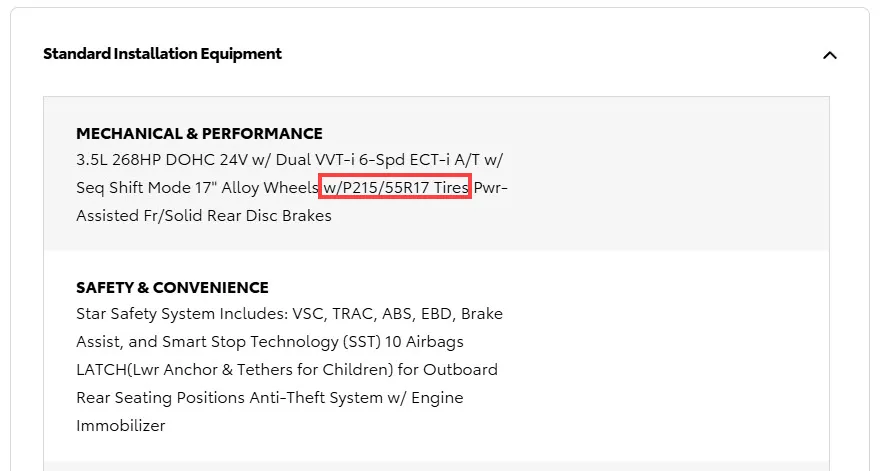
A quick heads-up: This process can vary from one brand to another. Some manufacturers offer incredibly detailed information, while others provide just the basics. You might also find that online records are harder to come by for older cars.
If the website doesn’t give you what you need, you can always try contacting the manufacturer’s customer service directly for help.
3. Explore tire retailer websites
A great shortcut to finding your tire size by VIN is to use the search tools on major tire retailer websites. Sites like Tire Rack, Discount Tire, and even brand-specific ones like Michelin or Goodyear all have features that let you shop by vehicle.
You simply enter your car’s year, make, model, and specific trim level, and their tools will show you a list of tires that fit – instantly telling you the correct size for your car.
💡It’s good to remember that tire retail sites search usually by your car’s year, make, and model – not its VIN. So, if you only have the VIN handy, no problem. Just use a quick VIN decoding tool to find your car’s details, and then use that info on the tire website.
For example, this is how it works on Tire Rack, a popular choice:
- On their homepage, click on the “Shop Tires” button.
- You’ll then be prompted to select the make, year, model, trim{{The trim level (e.g. Base, SE, LS, ES, Limited) can sometimes affect the tire size, as higher trims might come with larger wheels and different tires from the factory.}}, and any other required information. Then click on View Results.
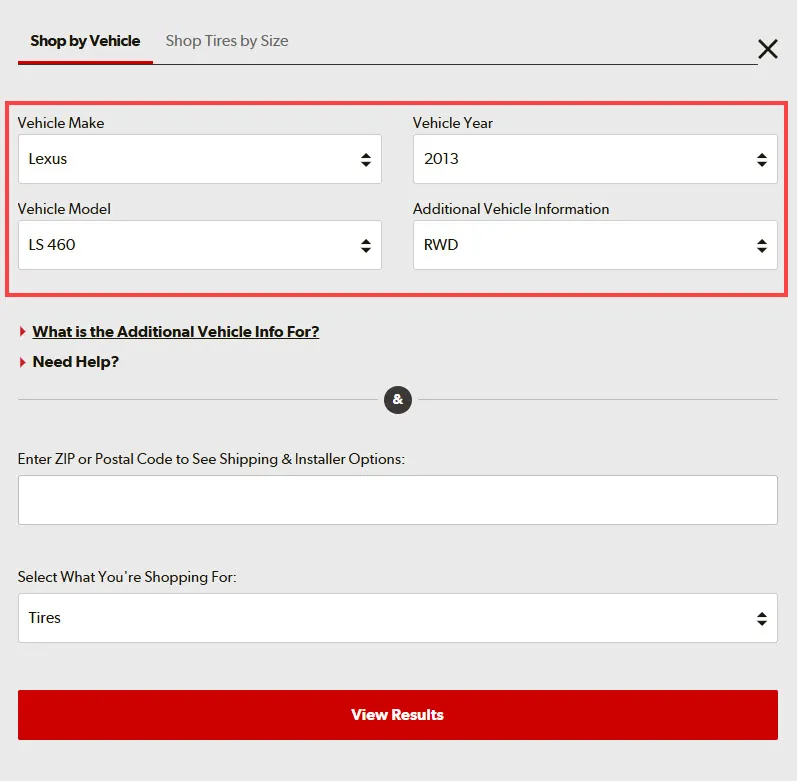
- Tire Rack will display a list of compatible tires, along with their respective sizes.
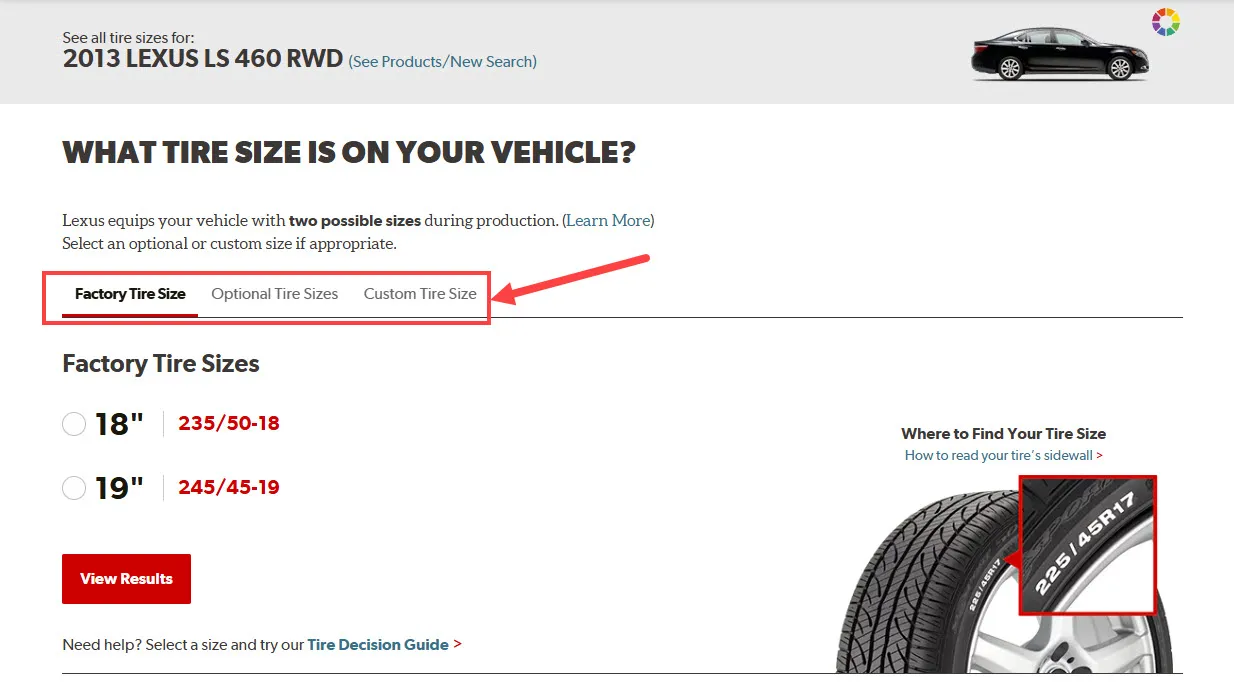
Why do I get different results from different sources?
When you are trying to find the tire size by VIN, it’s common to see a few different tire sizes listed for the same car, and there are a few reasons for this:
- Factory options: Some vehicles, especially high-performance or sports models, come with a staggered setup{{r/AMG [SimplyHuman]. (2024, October 24). Is there a site that can give me wheel specs by VIN? [Online forum post]. Reddit. https://www.reddit.com/r/AMG/comments/1gb14b2/is_there_a_site_that_can_give_me_wheel_specs_by/}}, meaning the back tires are a different size than the front ones. Additionally, many cars were offered with several different wheel and tire packages straight from the factory (for example, a standard 17-inch wheel and an optional 18-inch sport package).
- Aftermarket changes: The previous owner may have installed custom wheels and tires. If the car is a used one, it might not have the original factory setup anymore.
If you see multiple results and aren’t sure what’s on your car, the most reliable source is the tire information placard. When in doubt, any professional at a trusted tire shop can confirm the correct size for you.
4. Find it on the car/documents
If you’re near your car or its associated documentation, you can often find your tire size in just a minute or two. Here are the best places to look:
- On the tire sidewall: The most obvious place is right on the tire itself. Look for a sequence of letters and numbers on the sidewall, something like P215/65R15 95H.
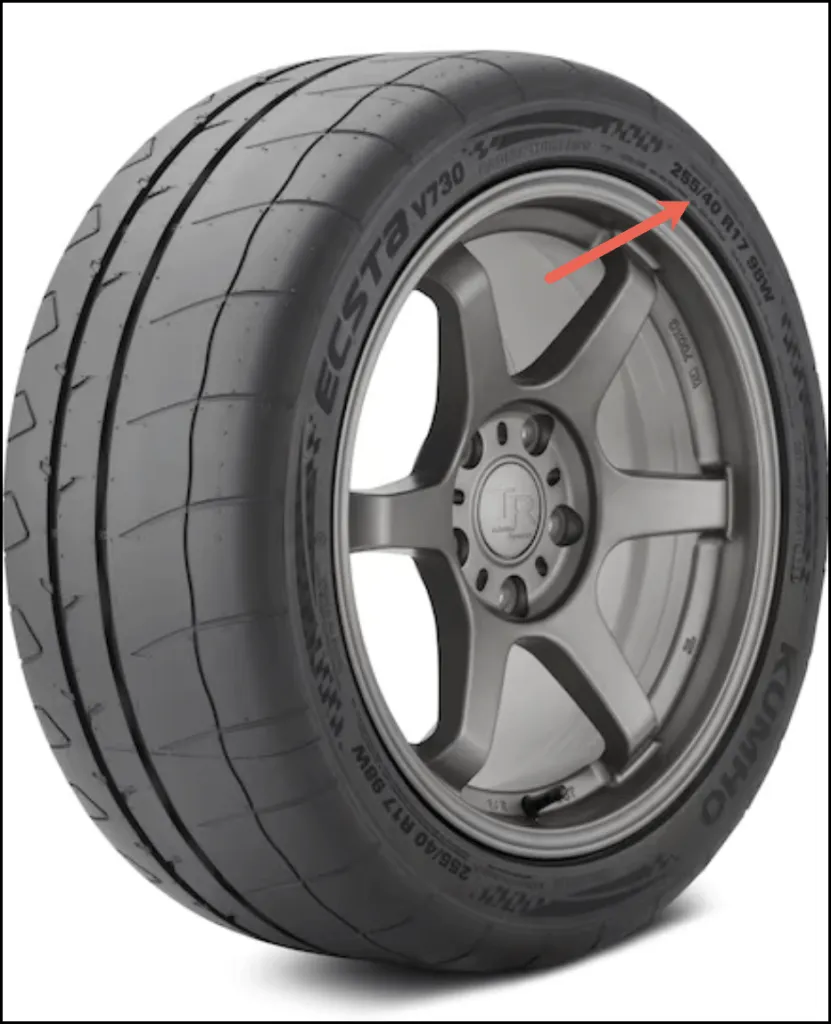
Just keep in mind, this shows the size of the tires currently on the car, which might not be the original factory-recommended size. Also, if the tire is old and worn, the numbers can be difficult to read.
- On the tire information placard: For the manufacturer-recommended size, check the tire information placard. This is a sticker located on the doorjamb of the driver’s side door. It’s the most reliable source on the vehicle because it shows the original specs, even if the tires have been changed.
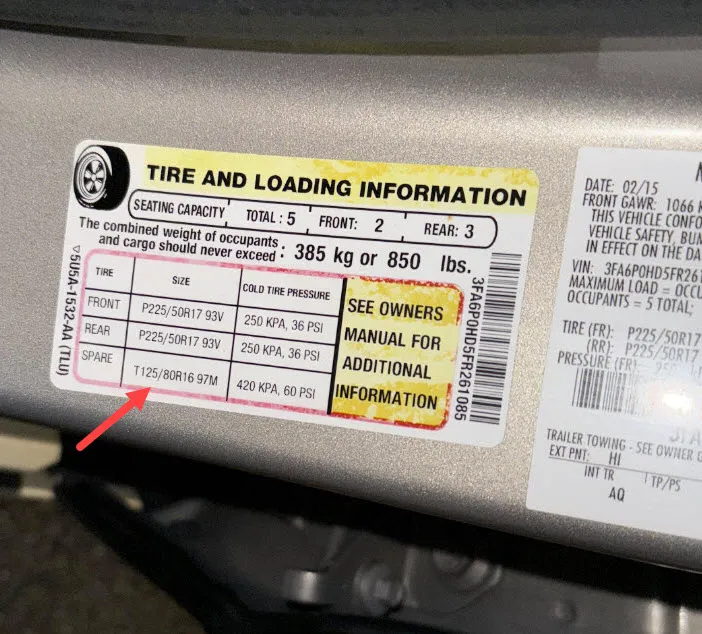
- In your vehicle’s paperwork: If you have the past service records, the tire size might be listed there, especially on the receipt for tire rotations or repairs.
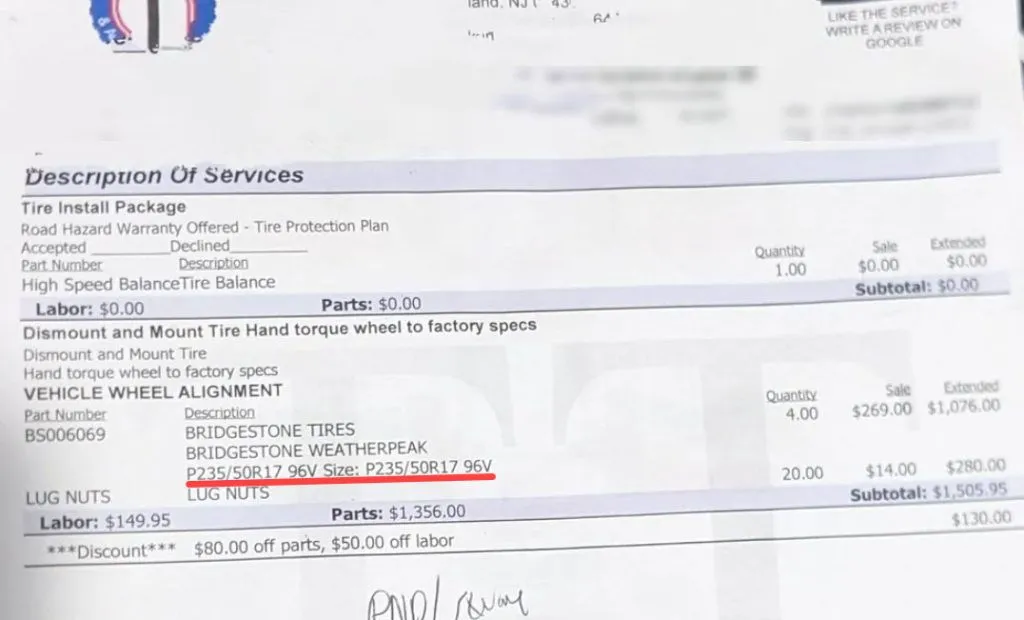
But when these quick methods fail, that’s exactly when using your VIN is the best way to find the correct, factory-spec tire size.
FAQs
1. How to read a tire size?
That long code on your tire’s sidewall isn’t random – it’s a detailed description of its size and construction. Let’s use P225/45R18 as our guide.
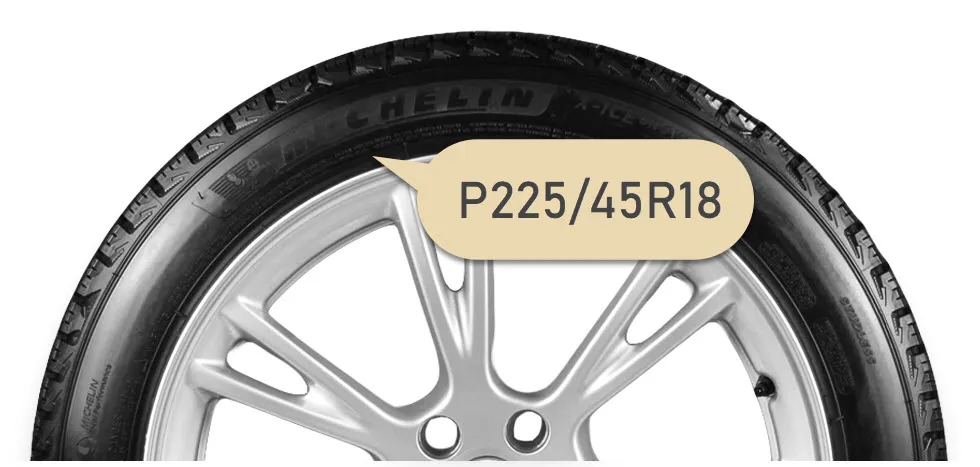
P = Tire Type: The ‘P’{{Other common codes include: LT (Light Truck), ST (Special Trailer), and T (Temporary).}} simply stands for Passenger vehicle.
If there’s no letter, it usually implies a P-Metric tire.
225 = Width: This is the tire’s width from sidewall to sidewall, measured in millimeters. In this case, it’s 225mm wide.
45 = Aspect Ratio: This tells you how tall the tire’s sidewall is compared to its width. Here, the sidewall height is 45% of the tire’s width. A lower number means a shorter, “low-profile” look.
R = Construction: ‘R’ stands for Radial, which is the standard construction for virtually all modern car tires.
18 = Wheel Diameter: This is the size of the wheel (or rim) the tire is designed to fit, measured in inches. This tire is made for an 18-inch wheel.
So, putting it all together, this tire is for a passenger car, is 225mm wide, has a low-profile sidewall, and is designed to fit an 18-inch wheel.
2. I’m thinking of getting bigger/smaller tires. Is that possible?
Yes, you can definitely change your tire size, but it requires careful planning to do it safely.
Changing the size isn’t just about looks; it affects your speedometer’s accuracy, handling, ride comfort, and even fuel economy. A tire that’s too big can rub against the car’s frame or suspension, which is dangerous.
Here’s how to approach it correctly:
- Do some research: Use an online tire calculator (sites like Wheel-Size.com or TireSize.com are great for this) to compare different sizes. The goal is to keep the new tire’s overall height as close to the original as possible.
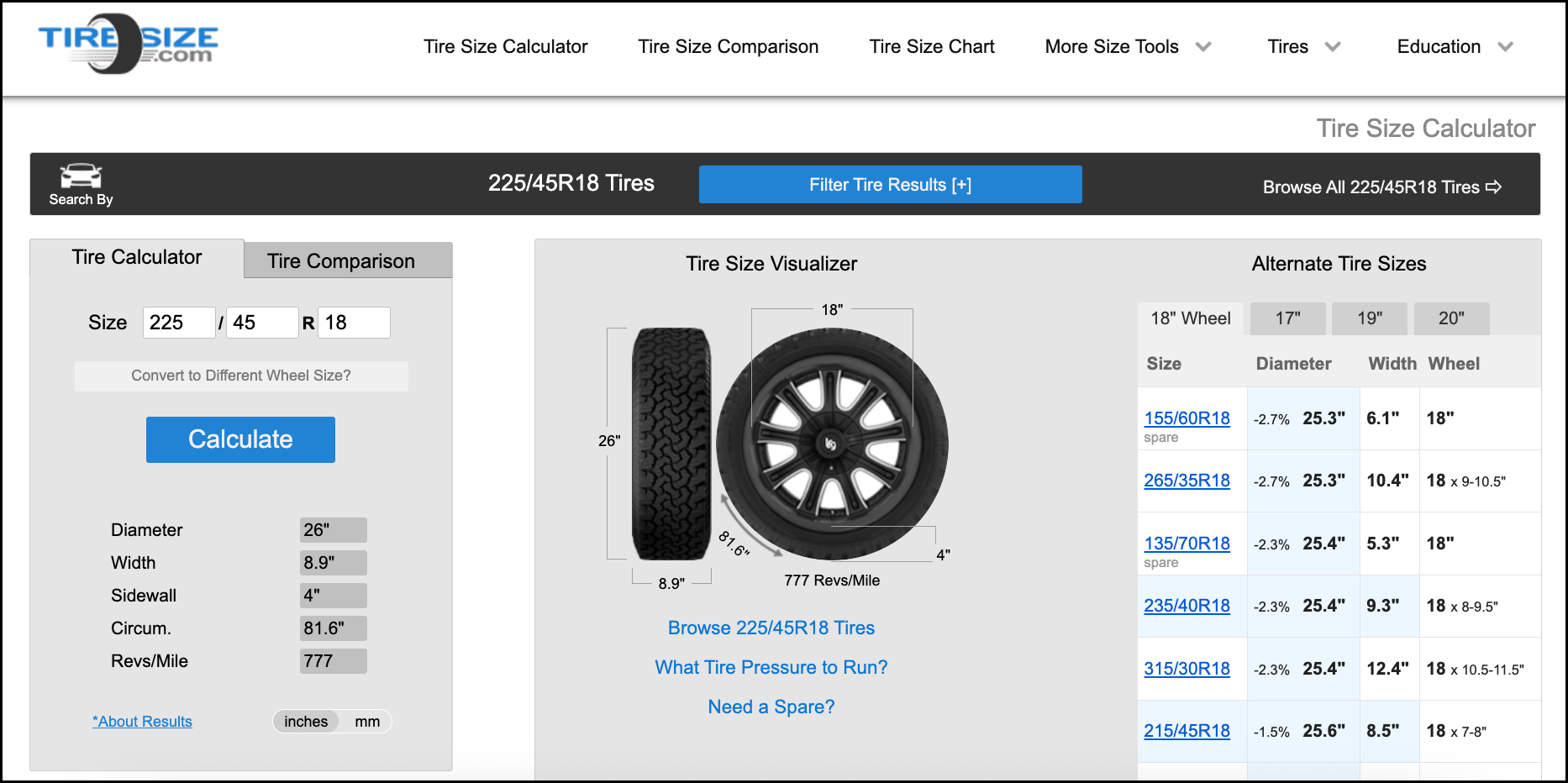
- Talk to an expert: Before you buy anything, consult a professional at a trusted tire shop. They can confirm that the size you want will fit without any issues and help you choose the best option for your vehicle and driving style.
3. VIN vs. TIN, what’s the difference?
While both are important ID codes, the main difference is simple: a VIN identifies your entire car, and a TIN (Tire Identification Number) identifies a single tire.
- VIN: A 17-digit code unique to your vehicle.
What it’s for: Registering your car, getting insurance, checking for recalls on the vehicle, and recording its overall history.
- TIN: A code of up to 12 digits on the tire’s sidewall, following the “DOT” letters.
What it’s for: Finding out the tire’s age, handling tire-specific recalls, and managing warranty claims for your tires.
In short, you use the VIN for car-related business and the TIN for tire-related business.
Footnotes

 View all of Arlee Hu's posts.
View all of Arlee Hu's posts.
